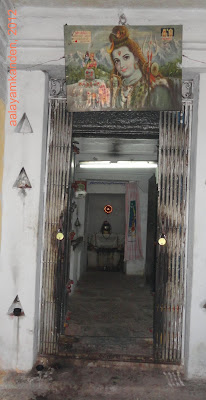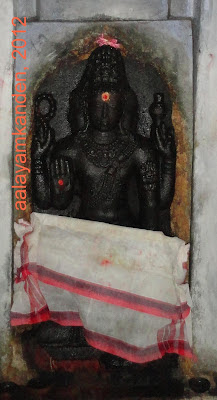I first met Dipa in the lobby of my hotel in Port Blair. She was in the Andamans volunteering with an NGO, teaching young children English. She was bubbly, cheerful and full of life. In fact, it took me a while to realise she was visually challenged. She was very confident and moved around, using her other senses to guide her. I was so impressed by her positive attitude that we soon became good friends.
Mornings were busy at work and in the evenings we strolled along the beach, talking about every topic under the sun. I told her that I planned to visit the Cellular Jail over the weekend before moving back to Chennai. She told me that she too had wanted to visit many a time, but had not had the opportunity to do so.
I was excited. My visit to Port Blair was never complete without a visit to the Cellular Jail. For hours I strolled around the grounds, often with tears in my eyes, going over the various symbols that reminded us of the great struggle for Independence. To me, Kalapani as the Cellular Jail was often called, is a great temple of sacrifice of innumerable freedom fighters who got us the precious gift of Independence.
I asked Dipa if she would go along with me - she gladly agreed. Most of the evenings during my stay in Port Blair, had been spent narrating stories about my travel to different temples. Dipa was always a keen listener, asking a lot of questions to understand better. I felt my skills in story-telling improving, as I made the description very detailed and user-friendly for Dipa to understand.
Our plan to visit Kalapani was made. We decided to leave after lunch so that we could look around the jail and then stay back for the Sound and Light Show at 5.30 pm.
The day arrived for our trip, and we were very excited as we got into the car. Once we alighted, I tried to explain the entrance to Dipa. I drew a semi-circle in her palm to describe the arched entrance and told her there were towers on either side."A tower?" she enquired. I held up my hand and ran her fingers over it. I told her a tower was similar in shape but as high as ten people standing on top of one another. Dipa's response made me realise how easy it is for us to talk about various things and how difficult it was for someone like Dipa to visualise. Dipa held on to my elbow, as she bent touched the ground with her right hand. " We stand today where our brave freedom fighters had put up with all forms of inhuman treatment, just for us" I said.
We walked into the sunny courtyard. From where we stood, the jail looked like a regal British building. There was a central watch tower with seven arms. Each arm of three storeys, was of varying length with a number of cells. I described the construction to Dipa. She now understood the watch tower and its arms and I was glad she did. Dipa stopped, listening to the excited blabber of children and tourists as they passed us by.
www.facebook.com/IndianBloggersLeague “
 |
| Photo Courtesy: Royal Blind Society |
I was excited. My visit to Port Blair was never complete without a visit to the Cellular Jail. For hours I strolled around the grounds, often with tears in my eyes, going over the various symbols that reminded us of the great struggle for Independence. To me, Kalapani as the Cellular Jail was often called, is a great temple of sacrifice of innumerable freedom fighters who got us the precious gift of Independence.
I asked Dipa if she would go along with me - she gladly agreed. Most of the evenings during my stay in Port Blair, had been spent narrating stories about my travel to different temples. Dipa was always a keen listener, asking a lot of questions to understand better. I felt my skills in story-telling improving, as I made the description very detailed and user-friendly for Dipa to understand.
Our plan to visit Kalapani was made. We decided to leave after lunch so that we could look around the jail and then stay back for the Sound and Light Show at 5.30 pm.
The day arrived for our trip, and we were very excited as we got into the car. Once we alighted, I tried to explain the entrance to Dipa. I drew a semi-circle in her palm to describe the arched entrance and told her there were towers on either side."A tower?" she enquired. I held up my hand and ran her fingers over it. I told her a tower was similar in shape but as high as ten people standing on top of one another. Dipa's response made me realise how easy it is for us to talk about various things and how difficult it was for someone like Dipa to visualise. Dipa held on to my elbow, as she bent touched the ground with her right hand. " We stand today where our brave freedom fighters had put up with all forms of inhuman treatment, just for us" I said.
We walked into the sunny courtyard. From where we stood, the jail looked like a regal British building. There was a central watch tower with seven arms. Each arm of three storeys, was of varying length with a number of cells. I described the construction to Dipa. She now understood the watch tower and its arms and I was glad she did. Dipa stopped, listening to the excited blabber of children and tourists as they passed us by.
The construction of the jail had begun in 1896 and was completed in 1906. The complex had a total of 696 cells each one of them measuring 13 feet 6 inches in length and 7 feet 6 inches in width with grilled doors. Each one of these small cells contained a prisoner in solitary confinement. No communication was possible at all between prisoners. When I told her these details, Dipa wanted to go into the cells and take a look. We moved up the narrow stone staircase, and went into the first storey. The cells occupied by famous personalities had their names mentioned against them. I stopped at the cell of Vinayak Damodar Savarkar, popularly known as Veer Savarkar. Sentenced to fifty years of imprisonment, he had not even known his brother Baburao Savarkar was also in the same jail for almost a period of two years.
 |
| Inside the Cell occupied by Veer Savarkar |
I took a picture of Dipa inside the cell, measuring its length and breadth with her outstretched arms, asking me to describe the corridor outside, the bare walls with a couple of alcoves and the eerie air around the place. She wanted to take a picture of me and so I helped her do so. When I told her she had shot a perfect picture, her face broke into a broad grin.
We went out into the exhibition wing, containing statues of the prisoners(primarily freedom fighters) and the treatment meted out to them.
The chains that had once adorned the bodies of the prisoners were now placed on the statues. An iron ring around the neck connected to chains around the back, and across the torso ended in cuffs around the ankles. These chains weighing 3-5 kgs had to be worn by the prisoners while performing tasks like extracting oil (replacing cattle)and cutting trees. Dipa's face grew red with anger. I sought permission from the official nearby to let Dipa touch and feel the chains. " This is so inhuman" she said. " After all, all that the prisoners were doing was fighting for freedom, that is rightfully ours", she said.
The next set of statues was even more painful to witness. A semi-naked man was strapped by the hands and waist to an iron stand and a guard was seen whipping him. Tears ran down my cheeks as I described this to Dipa. She wanted to know what a whip was and when I told her it was a thin piece of leather, that was used to punish people, she shuddered. Both of us stood still , thinking of the inhuman tortures our freedom fighters had undergone. After describing several other similar scenes to Dipa, we walked out to the area used to hang prisoners.
It is here that several prisoners who had either protested against their arrest or tried to escape, had been hanged to death. Dipa ran her fingers on the ropes, and even asked me to put the noose around her neck, to show her how people were hanged.
There were wooden trenches outside these compartments through which the bodies of the hanged prisoners were dragged out and disposed. When I described this to Dipa, she was absolutely horrified. "Oh no! I don't want to hear any more...did not the prisoners deserve to be treated with dignity?" she exclaimed.
We sat down for a few minutes, sipping cold water. The afternoon sun was beating down on us, and we were exhausted not just by the heat, but also by the emotions. After some time, we walked up to the watch tower. I walked behind Dipa, guiding her up the narrow stairs. "Raise your leg, one more step to go!" Dipa followed my instructions and we were soon in the watch tower, a strong breeze embracing us.
The seven sprawling arms lay spread out from the central tower. The arms were designed in such a way that the guards could easily shoot any prisoner trying to escape. Dipa and I walked down the arm, the breeze on our faces, as I described the view - the swaying coconut palms, and the ocean beyond.
Our last stop was at the flame of freedom - Swathantrya Jyothi - a tribute to all those selfless souls who lost their lives in the struggle for freedom. We stood for a couple of minutes, paying homage to the great men.
We then moved to the lawns were people were slowly trickling in, for the sound and light show. Chairs were arranged in a semi-circle in the center of the corridor, giving the audience a complete view of the prison complex. We moved to the first row, and took seats in the centre.Dipa listened to the sound of children squealing, and chiding parents asking them to sit down.
Soon, the show began.
Video Courtesy: You Tube
As the sounds (and lights) moved around the jail complex, we were transported to another world. This show was ideal for Dipa to visualize how things had been at the Cellular Jail during the freedom struggle. The audience who were laughing and talking had grown silent, as they heard the sounding of guns and the slogans raised by the freedom fighters when they were beaten ruthlessly. We remained seated in our chairs even as the crowd trickled out...the song sung by our freedom fighters "Naa Sahenge Atyachaar" still echoing in our ears!
"This post has been published by me as a part of IBL; the Battle of Blogs, sponsored by WriteupCafe.com. Join us at our official website and facebook page.
www.indianbloggersleague.comwww.facebook.com/IndianBloggersLeague “

























